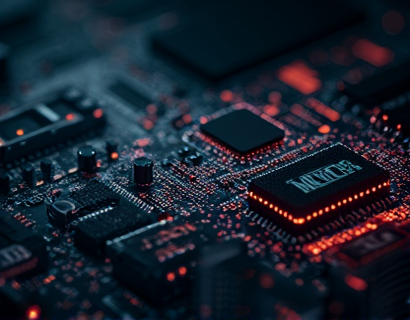AI-Driven Kitchen Insights: Transforming the Way Families and Enthusiasts Learn About Modern Kitchens
The modern kitchen has evolved significantly over the years, becoming more than just a space for cooking meals. It has transformed into a central hub for family gatherings, culinary experiments, and even home offices. With this evolution, the need for comprehensive and accessible information about kitchen design, services, and trends has become paramount. Enter an innovative AI-driven chat experience, meticulously designed to cater to families, students, and kitchen enthusiasts, providing a safe and educational platform to explore the world of kitchens.
Understanding the Need for Educational Kitchen Resources
In an era where information is abundant but not always reliable, the demand for a trusted and educational resource is higher than ever. Families with children, students eager to learn, and kitchen enthusiasts all share a common goal: to gain valuable insights into kitchen design and services without compromising on safety or accuracy. Traditional methods of gathering this information, such as books, magazines, and even in-person consultations, while valuable, often fall short in providing an interactive and personalized learning experience. This is where an AI-driven chat interface comes into play, offering a dynamic and secure environment for users to engage and learn.
How AI Chat Technology Enhances Kitchen Education
AI chat technology leverages advanced algorithms and natural language processing to simulate human-like conversations. This technology is particularly well-suited for educational purposes, as it can adapt to the user's level of knowledge, provide detailed explanations, and answer a wide range of questions in real-time. For kitchen-related topics, an AI chat can offer insights into the latest design trends, explore the functionality of different kitchen appliances, and even guide users through the process of planning a kitchen renovation.
The interactive nature of chat platforms makes learning more engaging and enjoyable. Users can ask follow-up questions, receive instant feedback, and delve deeper into specific topics of interest. This level of interactivity not only enhances the learning experience but also ensures that users retain the information better. For instance, a child learning about different types of kitchen countertops can ask about the pros and cons of each material, and the AI can provide a detailed comparison, complete with visual examples.
Ensuring a Safe and Verified Environment
One of the most significant advantages of using an AI-driven chat for educational purposes is the emphasis on safety and content verification. In a world where misinformation can spread rapidly, it is crucial to have a platform that guarantees accurate and reliable information. The chat interface is designed to source content from reputable industry experts, academic institutions, and official industry bodies. This ensures that users, especially children and students, are exposed to high-quality, verified information.
To further enhance safety, the chat system includes strict moderation protocols. All content is pre-approved to avoid any inappropriate or misleading information. Additionally, the chat can be tailored to different age groups, ensuring that the language and complexity of the information are appropriate for the user's age and understanding level. For younger users, the chat can use simpler language and include interactive elements like quizzes and games to make learning more engaging.
Exploring Kitchen Design Tips and Trends
Kitchen design is a fascinating field that combines aesthetics, functionality, and innovation. An AI-driven chat can serve as a valuable resource for anyone looking to update their kitchen or start from scratch. Here are some key areas where the chat can provide insightful guidance:
1. Design Styles and Trends
The chat can introduce users to the latest design trends, from minimalist and Scandinavian to industrial and farmhouse styles. It can provide examples of how these styles can be incorporated into different kitchen sizes and layouts. For instance, a user interested in a minimalist design can ask about key elements such as clean lines, neutral colors, and multifunctional furniture. The AI can then offer specific product recommendations and design tips to achieve this look.
2. Space Optimization
Efficient use of space is a common challenge in kitchen design, especially in smaller homes. The chat can guide users through various space optimization techniques, such as using wall-mounted shelves, under-cabinet storage, and multi-functional appliances. For example, a user with a compact kitchen can ask for suggestions on maximizing storage without sacrificing counter space. The AI can recommend solutions like pull-out drawers, retractable shelves, and corner cabinets.
3. Sustainable and Eco-Friendly Options
With a growing awareness of environmental issues, many homeowners are seeking sustainable and eco-friendly kitchen solutions. The chat can provide valuable insights into materials, appliances, and practices that reduce the kitchen's environmental impact. Topics can include energy-efficient appliances, recycled and sustainable materials, and water-saving fixtures. A user interested in reducing their carbon footprint can ask about the best eco-friendly countertop options, and the AI can list materials like bamboo, recycled glass, and quartz made from recycled materials.
Navigating Kitchen Services and Industry Insights
Beyond design, understanding the various services and industry insights is crucial for making informed decisions about kitchen projects. An AI-driven chat can offer comprehensive information on the following areas:
1. Kitchen Renovation and Remodeling
Renovating a kitchen can be a complex process, involving multiple steps and considerations. The chat can guide users through the renovation process, from initial planning to final installation. It can provide checklists, timelines, and tips for managing the project efficiently. For example, a user planning a major renovation can ask about the typical timeline and what to expect at each stage. The AI can outline a step-by-step process, including obtaining necessary permits, hiring contractors, and selecting materials.
2. Appliance Selection and Technology
The modern kitchen is equipped with a wide range of appliances that go beyond the basics. From smart refrigerators to induction cooktops, choosing the right appliances can significantly impact the kitchen's functionality and efficiency. The chat can help users navigate the vast array of options available, considering factors like energy efficiency, smart home integration, and durability. A user looking to upgrade their cooking appliances can ask for recommendations on the best smart ovens or energy-efficient dishwashers, and the AI can provide detailed comparisons and user reviews.
3. Professional Services and Contractors
Finding reliable and skilled professionals is essential for a successful kitchen project. The chat can assist users in identifying and selecting the right contractors, architects, and designers. It can provide criteria for evaluating professionals, such as reviews, certifications, and portfolio samples. Additionally, the AI can offer tips on how to conduct interviews, review contracts, and manage the project timeline. For instance, a user seeking a kitchen designer can ask for advice on how to assess a designer's experience and portfolio, and the AI can provide a checklist of questions to ask during the initial consultation.
Interactive Learning for Children and Students
For children and students, learning about kitchens should be both educational and fun. The AI-driven chat can be tailored to create an engaging and interactive learning experience. Here are some ways the chat can cater to younger audiences:
1. Educational Games and Quizzes
The chat can include educational games and quizzes that make learning about kitchens enjoyable. For example, a quiz can test users' knowledge about different kitchen tools and their uses, or a game can challenge users to design a kitchen layout within certain constraints. These interactive elements not only educate but also keep children engaged and motivated.
2. Storytelling and Scenarios
Using storytelling and scenarios can help children understand complex concepts in a relatable way. The chat can present stories about kitchen heroes who solve design challenges or scenarios where users have to make decisions about kitchen planning. For instance, a story might follow a family planning their dream kitchen, and the user can make choices at each step, learning about the consequences of their decisions.
3. Visual Aids and Multimedia
Incorporating visual aids and multimedia elements can enhance the learning experience. The chat can display images, videos, and 3D models of kitchen designs, appliances, and renovation processes. For example, a user learning about different flooring options can view high-quality images and videos showing the installation process and the final result. This visual approach helps children and students better understand and remember the information.
Building a Community of Kitchen Enthusiasts
An AI-driven chat platform can also serve as a community hub for kitchen enthusiasts to connect, share ideas, and collaborate. Here are some ways the chat can foster a sense of community:
1. Discussion Forums
The chat can include dedicated forums where users can discuss various kitchen-related topics, share their projects, and seek advice from others. These forums can be categorized by topic, such as design, renovation, appliances, and cooking. Users can post questions, share photos, and engage in discussions, creating a supportive and informative community.
2. Expert Q&A Sessions
Regular Q&A sessions with industry experts can provide users with valuable insights and answers to their specific questions. These sessions can be scheduled at convenient times and cover a wide range of topics, from advanced design techniques to budget-friendly renovation tips. Users can submit their questions in advance or during the session, and the AI can facilitate the interaction, ensuring that all questions are addressed.
3. Collaborative Projects
The chat can enable users to collaborate on kitchen-related projects, such as designing a community garden kitchen or planning a group renovation project. Users can work together in real-time, sharing ideas, and providing feedback. This collaborative approach not only enhances the learning experience but also builds a sense of community and teamwork.
Conclusion
The integration of AI-driven chat technology in kitchen education offers a revolutionary way for families, students, and enthusiasts to gain valuable insights into kitchen design and services. By providing a safe, verified, and interactive platform, this innovative tool ensures that users of all ages can learn and grow in their understanding of kitchens. Whether it's exploring design trends, navigating renovation processes, or connecting with a community of like-minded individuals, the AI chat stands as a beacon of knowledge and inspiration in the world of kitchens.










































